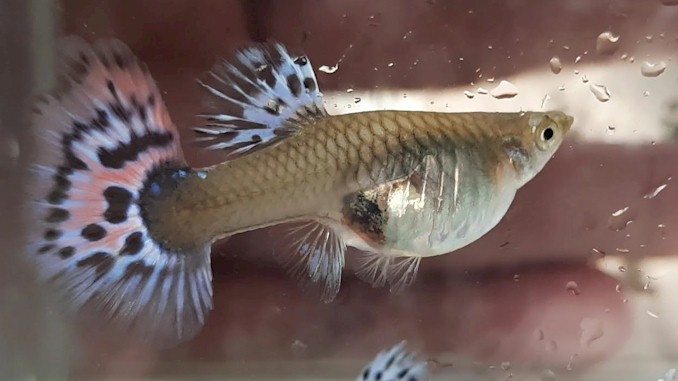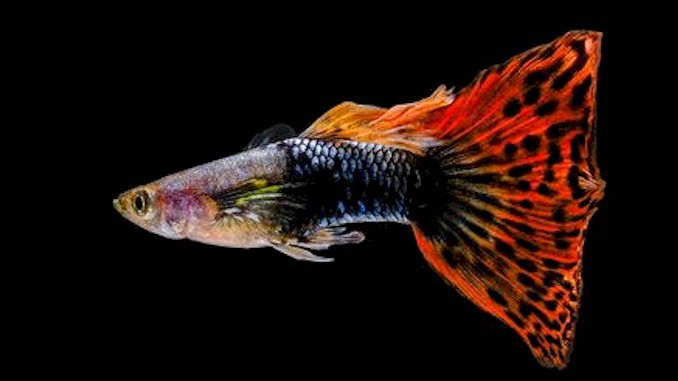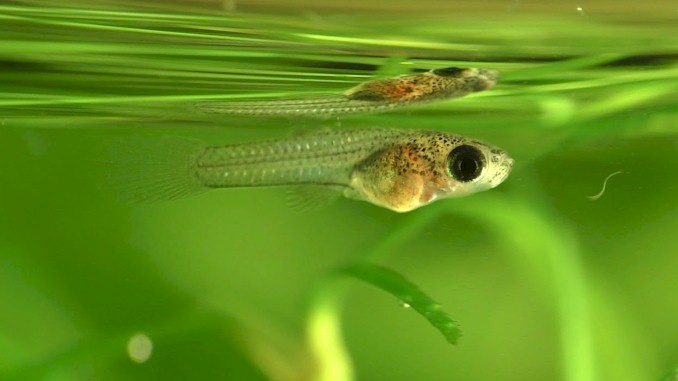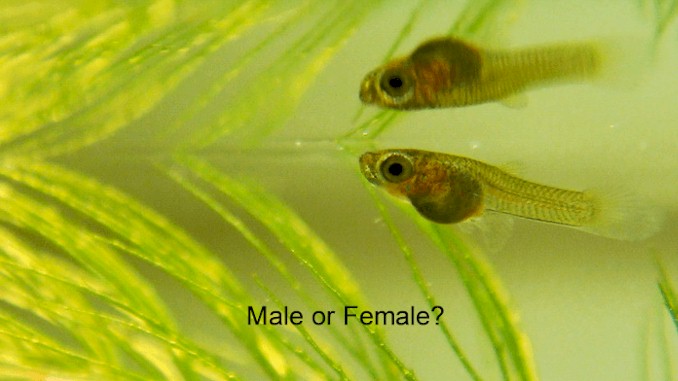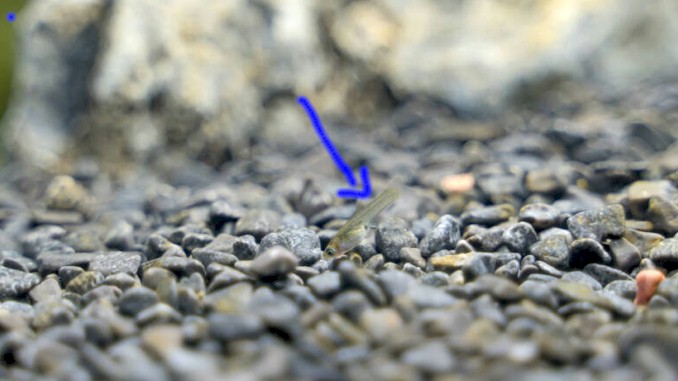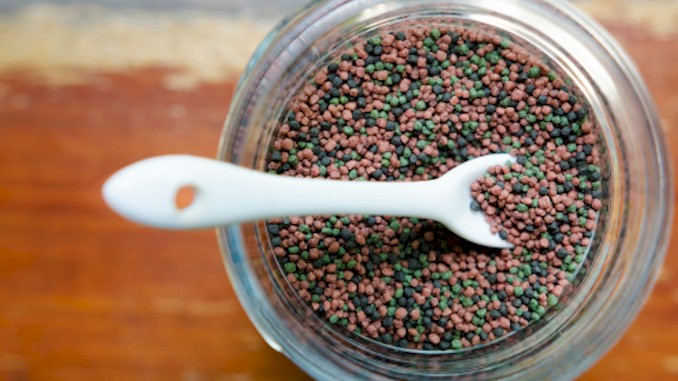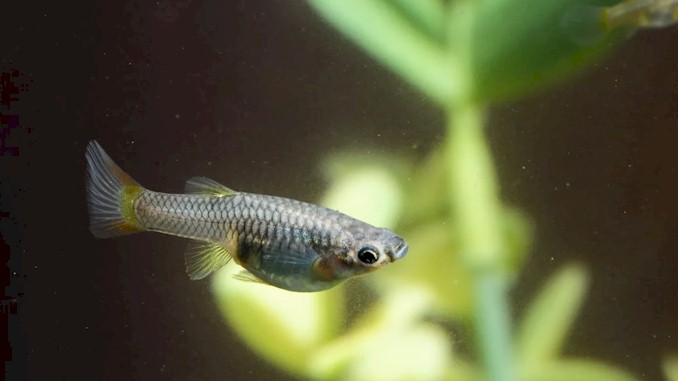Guppy Maternity: To Separate or Not to Separate?
I had a bunch of guppies in my tank, and one day I noticed something strange. One of the female guppies looked a bit bigger than usual. I did a little research and found out she was pregnant! Now, you might be wondering, “Should I separate pregnant guppies?” I wanted to make sure they were healthy and happy, and that their babies would survive. I’ve done some digging and explored the pros and cons of separating these expectant fishes, and I’m here to share my findings with you.
The answer to this question depends on various factors. Separating pregnant guppies can provide a safe and controlled environment for them to give birth, protecting the fry from potential predation. On the other hand, leaving them in the main tank allows for a natural and stress-free birthing experience. Ultimately, the decision should consider the specific circumstances and goals of the aquarist.
Now that we’ve addressed the main question of whether to separate pregnant guppies, there are still important aspects to explore. In the following paragraphs, we’ll delve into the pros and cons of separating pregnant guppies in more detail. We’ll discuss the potential benefits of isolation, such as reducing stress and improving survival rates, as well as the potential drawbacks, such as disrupting the social dynamics of the tank, and give you some tips and tricks on how to care for your pregnant guppies and their babies. By the end of this post, you will have a clear idea of what to do and how to do it. So, let’s continue our exploration and uncover even more valuable insights together!
How to Tell If Your Guppy Is Pregnant
One of the first things you need to know if you want to care for your pregnant guppies is how to tell if they are pregnant in the first place. Guppies are livebearers, which means they give birth to live young instead of laying eggs. This also means that they have some unique signs of pregnancy that you can look for.
The Gravid Spot
The most obvious sign of pregnancy in guppies is the gravid spot. This is a dark spot near the base of the mother’s anal fin, where the womb is located. The gravid spot is caused by the developing embryos showing through the mother’s translucent abdomen.
The gravid spot usually appears as a yellowish-brown triangle-shaped spot at first, and it will gradually darken as the pregnancy progresses. It may become orange or black, depending on the color of the mother and the babies. You can also see little dots (the baby guppies’ eyes) in the gravid spot when the mother is close to delivery.
The Belly Bulge
Another sign of pregnancy in guppies is the belly bulge. Like humans, the female guppy will get larger as the babies grow inside her. Sometimes this can be confused with bloating or overfeeding, but if you monitor your guppy’s belly for several weeks and it continues to get bigger over time, your guppy is probably pregnant.
Your female guppy is getting close to delivery time when she is very large and has a boxy appearance. It takes about a month for the fry (baby guppies) to be ready for birth.
Body Contractions
A final sign of pregnancy in guppies is body contractions. This is a sign that your guppy is in labor and about to give birth. You will notice that your guppy’s body will tighten and relax repeatedly, as if she is pushing out the babies.
This process may last for several minutes or hours, depending on how many babies your guppy has and how fast they come out. You may also see some blood or mucus coming out of your guppy’s anal vent during labor.
Other Signs
Besides these physical signs, there are also some behavioral signs that may indicate that your guppy is pregnant or in labor. These include:
- Shaking or shivering
- Rubbing herself against objects in the tank
- Refusing to eat
- Hiding or isolating herself from other fish
- Swimming in place or near the surface
Not all pregnant guppies will show these signs, and some may show them for other reasons, such as stress or illness. Therefore, it’s important to observe your guppies closely and look for multiple signs of pregnancy before you conclude that they are pregnant.
If you are still unsure if your guppy is pregnant or not, you can also try to witness the mating process between male and female guppies. This can be tricky, as mating can occur very quickly and often without notice. However, if you see a male guppy chasing a female guppy and inserting his gonopodium (a modified anal fin) into her anal vent, then you can be sure that he has inseminated her.
The Benefits of Separating Pregnant Guppies
If you have decided to keep guppies in your aquarium, you may be wondering if you should separate the pregnant ones from the rest of the tank. This is a common question among guppy owners, and there is no definitive answer to it. However, there are some benefits to separating pregnant guppies that you may want to consider.
Protection
One of the main reasons to separate pregnant guppies is to protect them and their babies from other fish in the tank. Other fish, even those of the same species, can be aggressive toward pregnant guppies and may harass them or nip at their fins. This can cause stress and injury to the mother, which may affect her health and the development of her fry (baby guppies).
Moreover, other fish may also eat the fry once they are born. Guppies are notorious for being cannibalistic and will not hesitate to devour their own offspring. Separating the pregnant guppy before giving birth will ensure that her fry are safe from predators and have a better chance of survival.
Reduce Competition for Food
Another benefit of separating pregnant guppies is that it can reduce competition for food in the tank. When there are fewer fish in the tank, each individual fish will have a better chance of getting the food it needs. This is especially important for pregnant guppies, who need more nutrition to support their growing babies.
Pregnant guppies should be fed high-quality foods that are rich in protein, such as live or frozen brine shrimp, bloodworms, or daphnia. They should also be fed more frequently than usual, about three times a day. By separating them from other fish, you can ensure that they get enough food and do not have to compete with others for it.
To Make It Easier to Monitor the Pregnant Guppy
Separating pregnant guppies is also beneficial for monitoring their health and the health of their babies. This allows for better control of water quality, diet, and other factors that can affect the growth and development of the fry.
By keeping the pregnant guppy in a separate tank or breeding box, you can easily observe her behavior and look for signs of labor, such as body contractions, shaking, or swimming in place. You can also check on the fry after they are born and see how many there are, what color they are, and how active they are.
To Avoid Injury to the Babies
Another reason to separate pregnant guppies is to avoid injury to the babies during birth. Guppies give birth to live young that are fully formed and ready to swim. However, they are very small and fragile, and may get hurt by the water flow or the gravel in the main tank.
By separating the pregnant guppy in a separate tank or breeding box with gentle water flow and soft substrate, you can prevent any damage to the fry during birth. You can also use a breeding net or trap to catch the fry as they come out and transfer them to a safe place.
Stress-Free Delivery
Finally, separating pregnant guppies can help them have a stress-free delivery. Guppies are sensitive to stress and may abort their babies or reabsorb them if they feel threatened or uncomfortable. They may also extend their pregnancy beyond the typical duration of 28 days if they are stressed.
Stress in a tank can have many sources, such as poor water quality, overcrowding, noise, temperature fluctuations, or aggression from other fish. By separating the pregnant guppy in a calm and comfortable environment, you can reduce her stress levels and help her have a smooth delivery.
The Drawbacks of Separating Pregnant Guppies
While separating pregnant guppies has many benefits, it also has some drawbacks that you should be aware of. Separating pregnant guppies is not always necessary or feasible, and it may have some negative consequences for the mother and her babies. Here are some of the drawbacks of separating pregnant guppies:
Stress
One of the main drawbacks of separating pregnant guppies is that it can cause stress to the mother and her babies. Stress is a major factor that can affect the health and survival of guppies, especially during pregnancy and birth. Stress can cause guppies to abort their babies, reabsorb them, or extend their pregnancy beyond the normal duration.
Stress can also affect the immune system of guppies, making them more susceptible to diseases and infections. Stress can also affect the behavior and growth of the fry, making them less active and more vulnerable to predators.
Stress can come from many sources, such as poor water quality, overcrowding, noise, temperature fluctuations, or aggression from other fish. However, one of the most common sources of stress for pregnant guppies is being moved to a new tank or breeding box.
Moving a pregnant guppy to a new environment can be very stressful for her, as she has to adjust to new water parameters, new tank mates, new decorations, and new food sources. This stress can affect her pregnancy and delivery, and may even cause her to eat her babies after giving birth.
Therefore, if you decide to separate a pregnant guppy, you should do it carefully and gently. You should also try to minimize the changes in the new tank or breeding box and make it as similar as possible to the main tank. You should also avoid moving the pregnant guppy too often or too late in her pregnancy.
Expense
Another drawback of separating pregnant guppies is that it can be expensive. If you want to separate a pregnant guppy, you will need a separate tank or breeding box for her. This means that you will have to buy or set up another aquarium with all the necessary equipment, such as filter, heater, light, substrate, plants, and decorations.
You will also have to cycle the new tank or breeding box before adding the pregnant guppy to ensure that the water quality is optimal. This can take several weeks or months depending on the size and type of the tank or breeding box.
Alternatively, you can use a fish bowl, plastic container, or bucket as a temporary tank or breeding box for your pregnant guppy. However, these options are not ideal as they do not provide enough space, filtration, heating, or lighting for your pregnant guppy. They may also be more prone to water quality issues and temperature fluctuations.
Therefore, if you want to separate a pregnant guppy, you should be prepared to spend some money and time on setting up a suitable tank or breeding box for her. You should also consider the maintenance costs of having another tank or breeding box in your home.
Breeding Boxes Can Be Stressful for Guppies
A breeding box is a small plastic container that hangs inside the main tank. It has small holes or slits that allow water to flow through but prevent other fish from entering. A breeding box is designed to isolate a pregnant guppy from other fish in the tank and catch her fry as they are born.
However, a breeding box can also be stressful for guppies. A breeding box is very small and cramped, which can make a pregnant guppy feel uncomfortable and claustrophobic. A breeding box also does not provide enough hiding places or plants for a pregnant guppy to feel safe and secure.
Moreover, a breeding box does not prevent other fish from seeing or harassing the pregnant guppy through the holes or slits. This can make a pregnant guppy feel threatened and stressed by the presence of other fish in the tank.
Therefore, if you decide to use a breeding box for your pregnant guppy, you should choose one that is large enough for her to move around comfortably. You should also add some plants or decorations inside the breeding box to provide some cover and privacy for your pregnant guppy. You should also monitor your pregnant guppy closely and remove her from the breeding box as soon as she gives birth.
How to Set Up a Separate Tank or Breeding Box for Pregnant Guppies
If you have decided to separate your pregnant guppies from the rest of the tank, you will need to set up a separate tank or breeding box for them. A separate tank is a smaller aquarium that you can place next to or near your main tank. A breeding box is a small plastic container that hangs inside your main tank and allows water to flow through.
Both options have their pros and cons, and you can choose the one that suits your preferences and budget. Here are some steps on how to set up a separate tank or breeding box for your pregnant guppies:
Setting Up a Separate Tank
A separate tank is a good option if you want to provide more space and comfort for your pregnant guppies. It also allows you to control the water quality and temperature better than a breeding box. However, it also requires more equipment, maintenance, and cycling than a breeding box. Here are some steps on how to set up a separate tank for your pregnant guppies:
- Choose the size of the tank. You don’t need a very large tank for your pregnant guppies, as they will only stay there for a short time. A 5-gallon or 10-gallon tank should be enough for one or two pregnant guppies.
- Add the equipment. You will need a filter, a heater, a light, and an air pump for your separate tank. You can use the same equipment as your main tank, or buy smaller ones that are suitable for the size of your separate tank.
- Add the substrate. You can use gravel, sand, or bare bottom for your separate tank. However, some experts recommend using a bare bottom or a thin layer of substrate, as it makes it easier to clean and spot the fry.
- Add the plants and decorations. You should add some live or artificial plants and decorations to your separate tank to provide some cover and hiding places for your pregnant guppies. This will make them feel more secure and less stressed. You can also add some floating plants to provide shade and shelter for the fry.
- Cycle the tank. You should cycle your separate tank before adding your pregnant guppies to ensure that the water quality is optimal and stable. Cycling is the process of establishing beneficial bacteria in your filter and substrate that will break down ammonia and nitrite into less harmful nitrate. You can cycle your separate tank by adding some filter media or substrate from your main tank, or by using bottled bacteria products. Cycling can take several weeks or months depending on the size and type of your tank.
- Transfer the pregnant guppy. Once your separate tank is cycled and ready, you can transfer your pregnant guppy to it gently and carefully. You should use a net or a cup to catch your pregnant guppy from the main tank and place her in the separate tank. You should also acclimate her to the new water parameters by adding some water from the main tank to the cup gradually before releasing her into the separate tank.
Setting Up a Breeding Box
A breeding box is a cheaper and easier option than a separate tank if you want to separate your pregnant guppies. It also saves space and allows you to observe your pregnant guppies more closely than in a separate tank. However, it also has some drawbacks, such as being small, cramped, and stressful for your pregnant guppies. Here are some steps on how to set up a breeding box for your pregnant guppies:
- Choose the type of breeding box. There are different types of breeding boxes available in pet stores or online, such as hang-on boxes, floating boxes, net boxes, or trap boxes. They all have their advantages and disadvantages, and you can choose the one that suits your needs and preferences.
- Attach the breeding box to the main tank. You should attach the breeding box to the main tank using a hanger or suction cups. You should also make sure that there is enough water flow through the holes or slits of the breeding box to keep it oxygenated and clean.
- Add some plants or decorations inside the breeding box. You should add some live or artificial plants or decorations inside the breeding box to provide some cover and hiding places for your pregnant guppies. This will make them feel more secure and less stressed.
- Transfer the pregnant guppy. Once your breeding box is ready, you can transfer your pregnant guppy to it gently and carefully. You should use a net or a cup to catch your pregnant guppy from the main tank and place her in the breeding box. You should also acclimate her to the new water parameters by adding some water from the main tank to the cup gradually before releasing her into the breeding box.
How to Care for Your Pregnant Guppies and Their Fry
Caring for your pregnant guppies and their fry is an important and rewarding part of guppy breeding. You want to make sure that your pregnant guppies are healthy and happy, and that their fry are well-fed and protected. Here are some tips on how to care for your pregnant guppies and their fry:
Nutrition
A pregnant guppy requires a nutrient-rich diet to support her and her developing fry. You should offer a varied diet of high-quality flake food, live or frozen foods, and vegetable matter to ensure she receives all the necessary nutrients.
Some of the best foods for pregnant guppies are:
- Spirulina flakes
- Brine shrimp
- Bloodworms
- Daphnia
- Peas
You should feed your pregnant guppy small amounts of food three times a day. You should also avoid overfeeding, as this can cause bloating or constipation, which can affect her pregnancy and delivery.
The fry also need a nutritious diet to grow and thrive. You should feed them specially formulated fry food, such as crushed flakes, micro pellets, or powdered food. You can also feed them live or frozen foods, such as baby brine shrimp, microworms, or vinegar eels.
You should feed your fry small amounts of food four to six times a day. You should also remove any uneaten food from the tank or breeding box to prevent water quality issues.
Water Conditions
Water quality is crucial for the health of the pregnant guppy and her fry. You should maintain the following water parameters in your tank or breeding box:
- Temperature: 75°F to 82°F
- pH: 6.8 to 7.8
- Hardness: 8 to 12 dGH
- Ammonia: 0 ppm
- Nitrite: 0 ppm
- Nitrate: <20 ppm
You should also perform regular water changes to keep the water clean and fresh. You should change 10% to 20% of the water every week in your tank or breeding box. You should also use a gravel vacuum or a siphon to remove any debris or waste from the substrate.
You should also test the water parameters regularly using a test kit or test strips. You should monitor the levels of ammonia, nitrite, nitrate, pH, and hardness, and adjust them if necessary using water conditioners, buffers, or additives.
Tank Set-Up
Preparing for a pregnant guppy involves setting up the tank, providing appropriate nutrition, and ensuring the water conditions are suitable for the mother and her developing fry. Here are some steps to follow:
- Choose the size of the tank or breeding box. You don’t need a very large tank or breeding box for your pregnant guppies, as they will only stay there for a short time. A 5-gallon or 10-gallon tank or breeding box should be enough for one or two pregnant guppies.
- Add the equipment. You will need a filter, a heater, a light, and an air pump for your tank or breeding box. You can use the same equipment as your main tank, or buy smaller ones that are suitable for the size of your tank or breeding box.
- Add the substrate. You can use gravel, sand, or bare bottom for your tank or breeding box. However, some experts recommend using a bare bottom or a thin layer of substrate, as it makes it easier to clean and spot the fry.
- Add the plants and decorations. You should add some live or artificial plants and decorations to your tank or breeding box to provide some cover and hiding places for your pregnant guppies. This will make them feel more secure and less stressed. You can also add some floating plants to provide shade and shelter for the fry.
- Cycle the tank or breeding box. You should cycle your tank or breeding box before adding your pregnant guppies to ensure that the water quality is optimal and stable. Cycling is the process of establishing beneficial bacteria in your filter and substrate that will break down ammonia and nitrite into less harmful nitrate. You can cycle your tank or breeding box by adding some filter media or substrate from your main tank, or by using bottled bacteria products. Cycling can take several weeks or months depending on the size and type of your tank or breeding box.
- Transfer the pregnant guppy. Once your tank or breeding box is cycled and ready, you can transfer your pregnant guppy to it gently and carefully. You should use a net or a cup to catch your pregnant guppy from the main tank and place her in the tank or breeding box. You should also acclimate her to the new water parameters by adding some water from the main tank to the cup gradually before releasing her into the tank or breeding box.
When and How to Reintroduce Your Pregnant Guppies to the Main Tank
After your pregnant guppies have given birth to their fry, you may want to reintroduce them to the main tank. However, you should not do this too soon or too abruptly, as this can cause stress and harm to the mother and her babies. Here are some tips on when and how to reintroduce your pregnant guppies to the main tank:
When to Reintroduce Your Pregnant Guppies
You should wait until your pregnant guppies have recovered from the delivery before reintroducing them to the main tank. This may take a few hours or a few days, depending on the health and condition of the mother.
You should also wait until your fry are big enough and strong enough to survive in the main tank. This may take a few weeks or a few months, depending on the growth rate and size of the fry.
Some factors that can affect the growth rate and size of the fry are:
- Temperature: Higher temperatures can speed up the metabolism and growth of the fry, but they can also shorten their lifespan. The ideal temperature for guppy fry is around 80°F.
- Nutrition: A varied and high-quality diet can provide the fry with all the nutrients they need to grow and thrive. You should feed them specially formulated fry food, live or frozen foods, and vegetable matter.
- Water Quality: Clean and stable water conditions can prevent diseases and infections that can stunt or kill the fry. You should perform regular water changes and test the water parameters in your tank or breeding box.
As a general rule, you should wait until your fry are at least 1 inch long before reintroducing them to the main tank. This will ensure that they are less likely to be eaten by other fish or injured by the water flow or gravel.
How to Reintroduce Your Pregnant Guppies
You should reintroduce your pregnant guppies gradually and carefully to avoid shocking them with sudden changes in water parameters, temperature, or tank mates. You should also monitor them closely for any signs of stress or aggression from other fish.
Here are some steps on how to reintroduce your pregnant guppies:
- Gather all the fry in a plastic container with their own tank’s or breeding box’s water.
- Place the container into the main tank and leave it there for about 30 minutes. The goal is to equalize the temperatures between the two environments.
- Add a bit of tank water into the plastic container every several minutes until the container is full.
- Release the fry into the main tank gently and watch them for any signs of distress or danger.
- Repeat steps 1 to 4 for the mother guppy.
You can also use a net or a cup to transfer your pregnant guppies and their fry, but make sure you acclimate them to the new water parameters by adding some water from the main tank gradually before releasing them into it.

